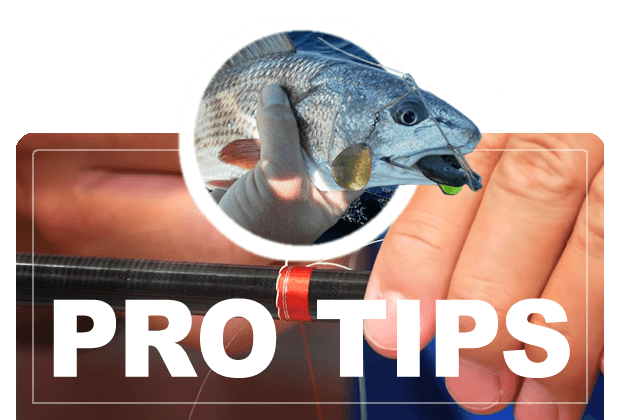How to Build Your Own Custom Fishing Rods (Part 3)
In this segment we will discuss exactly how we assemble the various parts of the grip to the rod. It is not overly complicated, but it does require some planning and preparation.
First you will need to determine the length of the butt grip including the butt cap or gimbal. For a typical inshore rod a seven to nine inch plus a one inch butt cap is average. Some may prefer shorter and some may prefer longer. That is part of what makes it custom. If you want a cork grip you will need to ream each cork ring to size where it will be on the taper of the blank. A rodbuilding tool called the dream reamer is perfect for this job. These reamers come in different sizes and put in a drill can make fast work of sizing your cork. Cork rings come in ½ inch thickness so for a seven inch grip you would need twelve cork rings plus your one inch butt cap. Ream each of your cork to the appropriate size so the fit on your blank easily, not too tight and not to loose. Using a rodbuilders glue apply a little to the blank and then to the side of each ring as you slide them into position. When they are all in position and glue is applied, put the assembly in a rodbuilders cork clamp and tighten. Some glue will ooze out and you can clean this off with denatured alcohol. Let sit over night to dry. (NOTE: be sure to leave about ¾” at the end of the blank for your butt cap)
Next you need a reel seat. I use only graphite reels seats inshore for sensitivity and durability. There are several ways to assemble the reel seat to the rod blank, but I like to use masking tape arbors. Mark on the blank where the reel seat goes with a china marker. Between the front end of the reel seat and the cork already glued on the blank wrap two to three places with ¾ or one inch masking tape so that it is snug when you slide the reel seat over the tape arbors. Once you have the arbors in place, using a serrated blade knife, put two or three deep grooves into each tape arbor. Apply rodbuilders epoxy liberally to the arbors and the blank in between them and slowly slide the reel seat down over the arbors continually rotating the seat to make sure the glue is in contact with all surfaces. When the seat gets to the cork grip already glued in place, rotate so that it is in line with the spine placement you have predetermined. Clean all excess glue off the reel seat ends. At this point you can let the seat dry over night or you may go ahead and add the cork fore grip, usually 2.5 to 3 inches. Use the same technique as the cork butt grip. Put the complete assembly in a cork clamp for overnight drying.
After everything is dry, using painters tape, tape off the butt end of the blank, both ends of the reel seat and the blank at the forward end of the foregrip. Using sandpaper in grits from 80 to 220 sand and shape your cork grips to the desired size and look you prefer. (NOTE: the foregrip usually has a taper down from the reel seat to the front end) And you have finished your complete grip and reel seat assembly on your custom rod. If you prefer to use EVA grips, they work in much the same way as cork but are one piece each.
In the next segment we will put the guides and tip top on the custom rod!
Good Fishing!
Capt. Rick Bennett, Ret.
www.rod-man.com
A lifetime fisherman, Capt. Rick Bennett, better known as the Rod-Man,has retired from the day to day activities as a charter boat captain but does offer “ON YOUR BOAT” Guided Fishing Trips. Capt. Rick will show you the when, the where and the how. From rod and reel selection to terminal tackle to bait, Capt. Rick has the know how.
- Choosing the right fishing line
- Better Casting Can Mean More Caught Fish
- Saltwater Fishing late May and into June
- Flounder from an Artificial Perspective
- Local Carolina Beach fishing in the month of April
- How to Build Your Own Custom Fishing Rods (Part 5)
- How to Build Your Own Custom Fishing Rods (Part 4)
- How to Build Your Own Custom Fishing Rods (Part 2)
- How to Build Your Own Custom Fishing Rods (Part 1)
- Surf Fishing Carolina Beach, North Carolina (Part 2)
- Surf Fishing Southeastern North Carolina (Part 1)
- Exciting shark fishing for everyone.
- Fishing for Mahi-Mahi
- “Specialty” Gear for Inshore Fishing
- Fishing for Spanish Mackerel
- Cobia fishing trips and tips, hard fighting, good eating
- Fishing tips on how and where to catch Black Drum
- How to catch Speckled Trout fishing tips and tricks
- How to catch Flounder, flounder fishing tips and tricks
- How to catch redfish, red drum fishing tips and tricks
- Reds and trout and some flounder are biting on artificials
- Atlantic bonito have been caught at the near shore AR’s. Bluefish have been plentiful.
- The wahoo bite is good and some blackfin tuna and sailfish are in the mix.
- Kings are still way out, but the Gulfstream is producing wahoo and blackfin tune.


